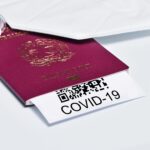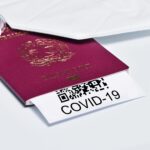Table of Contents
- Unpacking the September 2025 Express Entry Draw: A Comprehensive Breakdown
- The Canadian Experience Class (CEC): Canada’s Premier Pathway for In-Country Talent
- Decoding the CRS Score: What the Latest Cutoff Means for Your Profile
- Your Roadmap After the Invitation: Crucial Steps for a Successful PR Application
- Frequently Asked Questions
In a significant and highly anticipated move, Immigration, Refugees and Citizenship Canada (IRCC) has conducted a new Express Entry draw, focusing exclusively on candidates eligible under the Canadian Experience Class (CEC). This program-specific draw underscores the federal government’s commitment to retaining skilled talent already contributing to the Canadian economy. The draw, held on September 15, 2025, saw a substantial number of invitations issued to candidates who have accumulated at least one year of skilled work experience in Canada, providing a clear and prioritized path to permanent residency for those already integrated into Canadian society. This development brings a wave of optimism to thousands of hopefuls within the Express Entry pool who have been awaiting such targeted invitations.
Unpacking the September 2025 Express Entry Draw: A Comprehensive Breakdown
The latest Express Entry draw, which took place on September 15, 2025, marked a pivotal moment for many immigration candidates. IRCC issued 3,500 Invitations to Apply (ITAs) for permanent residence. A key feature of this draw was its exclusive focus on the Canadian Experience Class (CEC), signaling a strategic decision to prioritize individuals with proven Canadian work experience. The minimum Comprehensive Ranking System (CRS) score required for an invitation in this round was 462. This cutoff score is a critical benchmark, reflecting the competitive landscape of the Express Entry pool. For candidates with scores at or above this threshold, this draw represented the culmination of their efforts to build a strong profile. The specificity of the draw—targeting only CEC candidates—often results in a lower CRS cutoff compared to all-program draws, which also include candidates from the Federal Skilled Worker Program (FSWP) and the Federal Skilled Trades Program (FSTP). This targeted approach provides a significant advantage to those who have already demonstrated their ability to adapt and contribute to the Canadian labour market, reinforcing the value IRCC places on in-country experience.
The Canadian Experience Class (CEC): Canada’s Premier Pathway for In-Country Talent
The Canadian Experience Class (CEC) is one of the three main economic immigration programs managed under the Express Entry system. It is specifically designed for skilled workers who have recent and relevant work experience in Canada. To be eligible, a candidate must have at least 12 months of full-time (or an equal amount in part-time) skilled work experience in Canada in the three years before applying. This experience must have been obtained while on a valid temporary work permit. The program’s core philosophy is that individuals who have already lived and worked in Canada are well-positioned for long-term economic success and integration. They have established professional and social networks, adapted to the Canadian workplace culture, and improved their language skills in either English or French through daily use. For these reasons, CEC candidates are often viewed as ideal immigrants who can seamlessly transition from temporary to permanent residents. IRCC’s decision to conduct CEC-specific draws, like this recent one, is a strategic maneuver to retain this pool of valuable talent, particularly in a competitive global market for skilled workers. It serves as a reward and an incentive for temporary foreign workers and international graduates to build their careers in Canada with the clear prospect of becoming permanent residents.
Decoding the CRS Score: What the Latest Cutoff Means for Your Profile
The Comprehensive Ranking System (CRS) is the points-based system used by IRCC to assess and rank candidates in the Express Entry pool. The cutoff score of 462 in this latest Canadian Experience Class Express Entry draw is a direct reflection of the profiles of the candidates invited. A CRS score is a dynamic figure calculated based on a variety of core human capital factors, including age, level of education, language proficiency in English and/or French, and the amount of skilled work experience (both in Canada and abroad). Additional points can be awarded for factors like having a sibling in Canada, a provincial nomination, or a qualifying job offer. For this draw, a score of 462 meant that only candidates with this score or higher received an ITA. For prospective candidates, this number serves as a crucial indicator of the level of competitiveness. If a profile falls below this threshold, it is essential to explore ways to improve the CRS score. Common strategies include retaking language tests to achieve higher scores, gaining additional skilled work experience, pursuing further education, or securing a provincial nomination, which grants an additional 600 CRS points and effectively guarantees an invitation in a subsequent draw. Understanding the components of the CRS is the first step toward building a successful Express Entry profile.
Your Roadmap After the Invitation: Crucial Steps for a Successful PR Application
Receiving an Invitation to Apply (ITA) is a monumental achievement, but it marks the beginning of the next critical phase: submitting a complete and accurate application for permanent residence. From the moment the ITA is issued, candidates have a strict 60-day deadline to submit their electronic Application for Permanent Residence (e-APR). This is not a lot of time, so being prepared is paramount. It is highly advisable that candidates begin gathering necessary documentation long before receiving an ITA. Failure to submit within the 60-day window will result in the invitation expiring, and the candidate’s profile will be returned to the Express Entry pool, with no guarantee of being invited again. The application requires extensive supporting evidence to validate the claims made in the Express Entry profile. Being meticulous and organized is key to avoiding delays or, in worse cases, a refusal due to an incomplete or inaccurate application. A successful application hinges on providing all the required documents correctly and on time.
Here are some of the key documents and steps to focus on after receiving your ITA:
- Updated Personal Documents: Ensure passports for the principal applicant and all accompanying family members are valid and will not expire during the application processing time.
- Proof of Work Experience: This is one of the most vital components. You must provide detailed reference letters from previous employers that outline your job duties, hours worked, and salary, confirming the experience claimed in your profile.
- Police Clearance Certificates: You must obtain police certificates from every country where you (and any family members over 18) have lived for six months or more in a row since turning 18. This process can be time-consuming, so it is best to start early.
- Medical Examination: The principal applicant and all family members must undergo an upfront medical examination with a panel physician approved by IRCC.
- Proof of Funds: While CEC candidates are often exempt from showing settlement funds, it’s crucial to check the specific requirements for your application. If required, you must provide official letters from financial institutions showing you meet the minimum threshold.
Frequently Asked Questions
What is the Canadian Experience Class (CEC)?
The Canadian Experience Class is an immigration program that allows individuals who have worked in Canada for at least one year to immigrate permanently. It is one of the three federal programs managed through Express Entry and is designed for skilled workers who are already integrated into the Canadian labour market.
What does an Invitation to Apply (ITA) mean?
An Invitation to Apply (ITA) is an official invitation issued by IRCC to candidates in the Express Entry pool, allowing them to apply for Canadian permanent residence. Receiving an ITA means your Comprehensive Ranking System (CRS) score was high enough to meet the cutoff in a specific draw. You then have 60 days to submit a full application.
How is the Comprehensive Ranking System (CRS) score calculated?
The CRS score is calculated based on several factors, including your age, education level, language proficiency in English or French, and skilled work experience. Additional points are also available for factors such as a provincial nomination, a valid Canadian job offer, or having a sibling who is a Canadian citizen or permanent resident.
How can I improve my CRS score if it is below the cutoff?
You can improve your CRS score by retaking language tests to achieve a higher band, gaining more skilled work experience, completing additional educational credentials, or obtaining a provincial nomination. A provincial nomination adds 600 points to your score, which is the most effective way to guarantee an invitation.
What happens if I miss the 60-day deadline to submit my application after receiving an ITA?
If you do not submit your permanent residence application within the 60-day timeframe, your Invitation to Apply will expire. Your profile will be removed from the active pool, but you can create a new Express Entry profile and re-enter the pool to be considered for future draws, though there is no guarantee you will be invited again.
Talk to us to find out more. ->
The content above is not intended to provide legal advice or opinions of any kind and may not be used for professional or commercial purposes.







